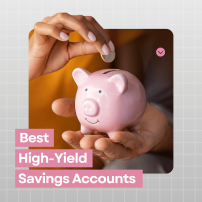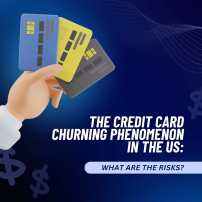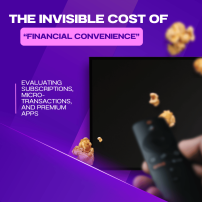The Complete Beginner’s Guide: How to Use Your First Credit Card in the US Responsibly

Advertisements
Getting your first credit card in the U.S. is a significant financial milestone.
It’s not just a convenient way to pay; it’s a crucial tool for building your credit history, which will impact nearly every major financial decision you make in the future, from renting an apartment to buying a car or even securing a mortgage.
However, without proper understanding and discipline, a credit card can quickly become a source of debt and financial stress.
This comprehensive guide will walk you through everything you need to know about using your first U.S. credit card responsibly, ensuring you leverage its benefits while avoiding its pitfalls.
Understanding the Basics: What Exactly Is a Credit Card?
Unlike a debit card, which pulls money directly from your bank account, a credit card allows you to borrow money from the card issuer (a bank or financial institution) up to a pre-set limit, known as your credit limit.
When you make a purchase, you’re essentially taking a short-term loan. You then agree to repay this borrowed amount, typically on a monthly basis.
The critical concept to grasp is the billing cycle and the due date.
Your billing cycle is the period (usually 30 days) during which your purchases are tallied.
At the end of the cycle, you receive a statement showing your total balance due.
You then have a grace period (typically 21-25 days) before your payment due date to pay off your balance without incurring interest charges.
Why Is Building Credit History So Important in the US?
In the United States, your credit history and credit score are paramount.
They are used by lenders, landlords, insurance companies, and even some employers to assess your financial reliability.
A strong credit score signals that you are a low-risk borrower, making it easier and cheaper to:
Rent an apartment: Landlords often check credit scores.
Get a cell phone plan or utilities: Good credit can avoid deposits.
Secure a loan: Lower interest rates on mortgages, car loans, and personal loans.
Get better insurance premiums: Insurers often use credit-based scores.
Even get certain jobs: Some employers check credit as an indicator of responsibility.
Your credit card is often the very first step in establishing this vital financial footprint.
Choosing Your First Credit Card
As a beginner, you might not qualify for the most premium rewards cards right away. Focus on cards designed for those building credit:
Secured Credit Cards: These require a cash deposit (which often becomes your credit limit). It’s a great way to prove responsible behavior without high risk for the issuer. Your deposit is returned once you close the account in good standing or upgrade to an unsecured card.
Student Credit Cards: If you’re a college student, these often have lower credit limits and offer small rewards with features tailored for students.
Retail Store Cards: While they can offer discounts, be cautious. Their interest rates are often very high, and limits can be low. They are generally not the best primary choice for building broad credit.
Authorized User: If a trusted family member (e.g., a parent) with excellent credit adds you as an authorized user on their card, their positive payment history can sometimes reflect on your credit report. This is a passive way to build credit, but you should still get your own card eventually.
Look for cards with:
No annual fee: Avoid unnecessary costs, especially when starting out.
Basic rewards: Even 1% cashback on all purchases is a nice bonus.
Online account management: Essential for tracking spending and payments.
The Golden Rules of Responsible Credit Card Use
Mastering these principles is key to building excellent credit and avoiding debt:
Always Pay Your Bill in Full, On Time, Every Month
This is the single most important rule. If you pay your statement balance in full by the due date, you will not pay a single cent in interest.
This is how credit cards are designed to be used responsibly. Paying only the minimum payment due will lead to interest charges, and your balance will grow rapidly.
Never Spend More Than You Can Afford to Pay Back
Your credit card isn’t an extension of your income. It’s a tool for convenience and credit building. Treat your credit limit as an emergency fund or a way to earn rewards on expenses you already plan to make and can afford.
Keep Your Credit Utilization Low
Your credit utilization ratio is the amount of credit you’re using compared to your total available credit. For example, if you have a $1,000 limit and owe $300, your utilization is 30%. Lenders prefer to see this ratio below 30% (and ideally below 10% for the best scores). High utilization can negatively impact your credit score. If you have a low credit limit, even small purchases can push your utilization up. Consider making multiple smaller payments throughout the month to keep your reported balance low.
Understand Your Interest Rate (APR)
Your Annual Percentage Rate (APR) is the interest rate you’ll be charged if you don’t pay your full balance by the due date. For beginner cards, APRs can be quite high (e.g., 20-30% or more). This is why paying in full is crucial. There’s often an introductory APR (e.g., 0% for 6-12 months), but this is a temporary perk; the regular APR will kick in later.
Monitor Your Account Regularly
Check your credit card statements and online account activity frequently. Look for:
Unauthorized transactions: Report any suspicious activity immediately.
Due dates: Confirm when your payment is due.
Spending limits: Stay aware of how much credit you’re using.
Set Up Automatic Payments (But Still Monitor!)
To avoid missing a payment due date, set up automatic payments for the full statement balance from your bank account.
This is a safety net. However, always ensure you have enough funds in your checking account to cover the payment, and still review your statement before the payment processes.
How Credit Cards Impact Your Credit Score (FICO Score Factors)
Understanding what contributes to your FICO score (the most widely used credit score) will help you optimize your credit card usage:
Payment History (35%): The most crucial factor. Paying on time is key.
Amounts Owed / Credit Utilization (30%): Keep this low.
Length of Credit History (15%): Older accounts are better.
New Credit (10%): Too many new accounts can be a red flag.
Credit Mix (10%): Having a mix of credit types (e.g., credit cards, student loans, car loans) can be beneficial, but don’t take on debt just for this.
Your first credit card, used responsibly, lays the foundation for excellent scores in all these categories.
Your first credit card in the U.S. is a powerful financial instrument. It offers unparalleled convenience and is essential for establishing a robust financial identity.
By adhering to the golden rules of paying in full and on time, maintaining low credit utilization, and monitoring your accounts diligently, you can successfully navigate the world of credit.
Think of your credit card as a tool to build a strong financial future, not a means to live beyond your current income.
Embrace responsibility from day one, and you’ll unlock a world of financial opportunities and peace of mind.
Related content

Best Personal Loan Platforms in the US (2025 Edition): SoFi, Upstart, Marcus & More

Best High-Yield Savings Accounts in the US in 2025

Best Credit Cards with No Foreign Transaction Fees: Ideal for Frequent Travelers

The Credit Card Churning Phenomenon in the US: Is It Legal? Is It Worth It? What Are the Risks?

0% APR Credit Cards: How to Take Advantage and What Traps to Avoid
